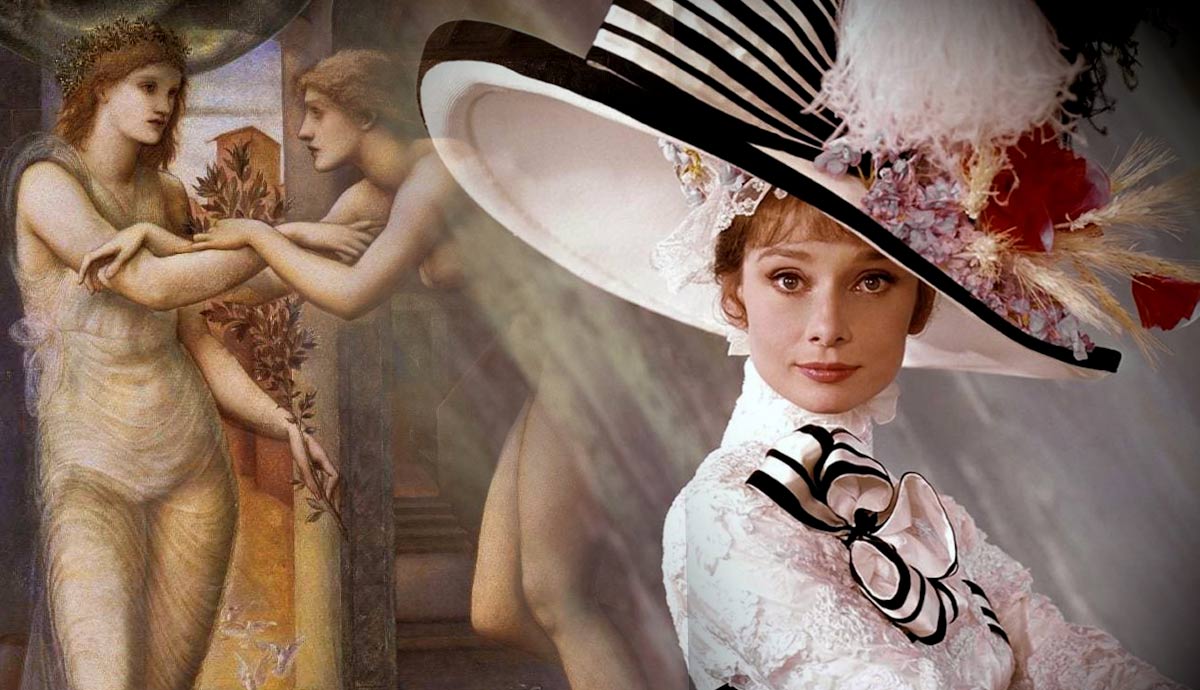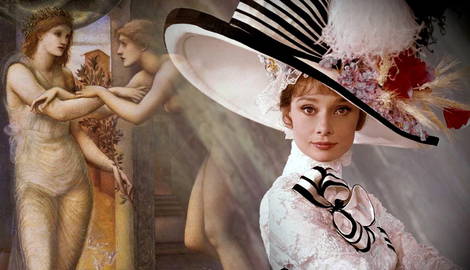
Most ancient civilizations used myths as a means to understand the world around them, and the Greeks were no exception. What sets Greek mythology apart, however, is its pervading influence on pop culture. It has served as the basis for countless narrative tropes across literature, poetry, and theater, and its rich symbolism has inspired painters for millennia. Since the advent of cinema, myths have been interpreted in new ways for the silver screen. Here are some of the myths that have served as inspiration for film directors around the world.
1. Greek Mythology’s Orpheus and Eurydice

The story of Orpheus and Eurydice is one of the most tragic and romantic in all of Greek mythology. So it’s no wonder that many filmmakers have felt compelled to recreate versions of this myth in their works.
Orpheus was a legendary musician and poet, who was said to be able to charm all living things with his songs. The God Apollo taught him to play the lyre, but he soon surpassed his teacher, becoming so accomplished that even the rocks and trees yielded to his tune. He appears in the myth of Jason and the Argonauts, but it is his love story with Eurydice for which he is best known.
Eurydice was a beautiful nymph who fell in love with Orpheus at first sight. The two were infatuated with one another and it wasn’t long before they were wed. However, Eurydice’s beauty was so enchanting that a God named Aristaeus tried to snatch her from her husband after the wedding. Eurydice fled into the woods where she was bitten by a poisonous snake and died.
Orpheus, devastated by the loss of his one true love, took his lyre and descended into the underworld to plead with Hades. Hades and his wife Persephone were so moved by Orpheus’ song that they agreed to release Eurydice’s soul under one condition—he must not look back at her as they leave the caves of the underworld. Overcome with gratitude, Orpheus thanked Hades and began his journey back into the light. However, just as he reached the mouth of the cave, he became concerned about not hearing Eurydice’s footsteps behind him, so he looked back. At that moment, Eurydice, who had indeed been following him, was sucked back into the underworld. She was lost to him forever.

This tragic tale of star-crossed lovers greatly impacted the prodigious French artist Jean Cocteau, who based his Orphic trilogy of films around the myth. Of these, it’s the second film, Orphée, which is the most literal re-telling. The film sees Jean Marais as Orpheus, a poet in post-war Paris who becomes entangled with the personification of Death herself. The film’s dreamlike atmosphere blends modern elements with the myth’s potent symbolism. In this version, Orpheus loses his beloved by glancing in the rear-view mirror causing her to disappear from the back seat.
Another French director, Marcel Camus, tackled the myth in 1959’s Black Orpheus. This film, based on the play Orfeu da Conceição by Vinicius de Moraes, sets the story in Rio De Janeiro during the carnival. Orpheus, a young bus driver, falls in love with Eurydice over the course of the carnival weekend, much to the fury of his betrothed Mira. Their love is short-lived, however, as Eurydice is followed by a masked figure called Death, who chases her into the night and murders her. Heartbroken, Orpheus goes to church where he sings a song in mourning. Eurydice’s soul is summoned to the chapel and speaks to Orpheus through the mouth of an elderly lady. She warns him not to turn around but Orpheus cannot resist and so he loses her forever just as in the original myth.
2. Pygmalion

The story of Pygmalion has had such an influence on popular culture that most will recognize its themes, even if they are not familiar with the original myth. Pygmalion was a Cypriot sculptor who became horrified by the prostitution of a group of women named the propoetides. He went into self-imposed isolation where he set about creating the perfect woman carved out of stone.
Pygmalion’s creation was so perfect that he fell hopelessly in love with it. He began to treat his work like his wife, dressing the statue up in fine clothing and sleeping next to it. Eventually, the Goddess Aphrodite granted Pygmalion’s greatest wish and the statue came to life.
The most famous cinematic adaptation of this myth is George Cukor’s 1964 film, My Fair Lady, based on the 1913 stage play Pygmalion by George Bernard Shaw. In this story, linguist Henry Higgins plucks a common flower seller, Eliza, from obscurity and instructs her in the mannerisms of high society. Once she sheds her cockney accent and corrects her posture, Professor Higgins realizes that he has created the perfect lady and he falls in love with her. While the film wraps up on an ambiguous note, in Shaw’s original play, Eliza rejects Professor Higgins which subverts the happy ending of the myth. This feminist take on Pygmalion has been explored in several other films, most notably Ex-Machina and Her, which both tell the story of men falling in love with robots.

In contrast to the propoetides, Pygmalion’s creation was inanimate and therefore entirely virtuous. In Ex-Machina and Her, the male protagonists fall in love with female robots who have been molded after the male vision of perfection. They are machines and therefore do not possess the complexities of a real, human woman. And just like in Shaw’s Pygmalion, both women leave the men once they become sentient enough to recognize their own autonomy.
This theme of a God-like, male creator fashioning a subservient female companion has captivated filmmakers since the 1920s. From Fritz Lang’s Metropolis to Yorgos Lanthimos’ Poor Things, the film industry is deeply indebted to the myth of Pygmalion.
3. Theseus and the Minotaur

The story of Theseus and the Minotaur is one of heroism, power, and greed. The Minotaur was a fearsome beast born from an unholy union between the wife of King Minos and a prized bull. King Minos was a tyrannical leader who killed his own brother in order to ascend to the throne. Poseidon, the God of the Sea, sent Minos a beautiful, snow-white bull which he was to sacrifice in honor of the gods. However, once Minos set eyes on the bull he was overcome by its majesty and decided to keep it. Furious, Poseidon made the King’s wife, Pasiphae, fall in love with the bull, and through her infidelity, The Minotaur was born.
King Minos asked the inventor Daedalus for help in order to confine the Minotaur. Daedalus created a complex labyrinth that was almost impossible to escape and placed the Minotaur at its center. Each year, King Minos sacrificed fourteen people from the neighboring Kingdom of Athens to appease the beast.
Theseus was the prince of Athens. He became bothered by the sacrifices and volunteered to go and face the Minotaur himself. Before he faced the beast, he fell in love with Ariadne, the daughter of King Minos who told him how to navigate the labyrinth so he could eventually kill the Minotaur.

This myth has been reimagined for the big screen many times with more literal retellings in the 2006 Minotaur and The Immortals from 2011, but it has also inspired screenwriters in more abstract ways. Daedalus’ labyrinth has shown up in films such as Labyrinth and Pan’s Labyrinth. In both films, a young girl ventures into a maze-like place full of monsters, and in Pan’s Labyrinth, the protagonist Ofelia sacrifices herself, mirroring the sacrificial elements in the original myth. Another film that includes both the sacrificial elements and the labyrinth is the 2014 The Maze Runner. This is a dystopian fantasy film where a number of teenagers are deposited in a giant maze and must attempt to find their way out while battling monsters.
2023’s Saltburn makes many references to the myth of Theseus and the Minotaur. The film follows Oxford student, Oliver Quick, as he infiltrates a family of aristocrats, usurping their power to eventually take their estate. The climactic scene in the film takes place in the center of a maze in front of the statue of a minotaur. The film also includes a Midsummer Night’s Dream party in which characters dress as Theseus, Icarus, and The Minotaur. Alluding to the myth through symbolism reinforces Oliver as a Theseus-like character, who challenges the existing hierarchy to take power for himself. The aristocratic family in the film is representative of abiding power structures within the UK class system, propped up by a history of sacrifice and greed.
4. The Odyssey From Greek Mythology

The Odyssey is an epic poem by the ancient Greek poet Homer. It is one of the most enduring works of literature in Western civilization and recounts the epic journey of Odysseus as he strives to return home to Ithaca after the fall of Troy. Filled with adventure, mythical creatures, and divine intervention, the story has been adapted multiple times for the screen.
The most literal adaptation is the 1954 Ulysses which stars a young Kirk Douglas as Odysseus, but the myth has also inspired more modern versions such as the Cohen brothers’ O Brother Where Art Thou. This movie stars George Clooney as Ulysses (the latinized version of Odysseus), an escaped convict in 1930s Mississippi who is on a quest to find some treasure. The film offers up the mythical creatures from the original story in ingenious ways. For example, the character of Big Dan wears an eye patch to embody the role of the Cyclops.
The most famous work associated with this myth is the novel Ulysses by James Joyce. Joyce first became acquainted with Odysseus as a child. When crafting his magnum opus, he used the same narrative structure as The Odyssey but set his story over the course of one day in 1920s Dublin. This novel was adapted for the screen in 1967, winning an Academy Award for Best Screenplay.
The Odyssey is one of the stories that formed the basis of Joseph Campbell’s theory of the hero’s journey. This theory has inspired countless filmmakers when crafting their stories and so the Odyssey has had an enduring impact on the cinematic form. Famous examples of films that follow the hero’s journey structure include Star Wars, The Matrix, The Wizard of Oz, and Finding Nemo. While it may not seem like it at first glance, these films all owe a lot to Greek mythology.










